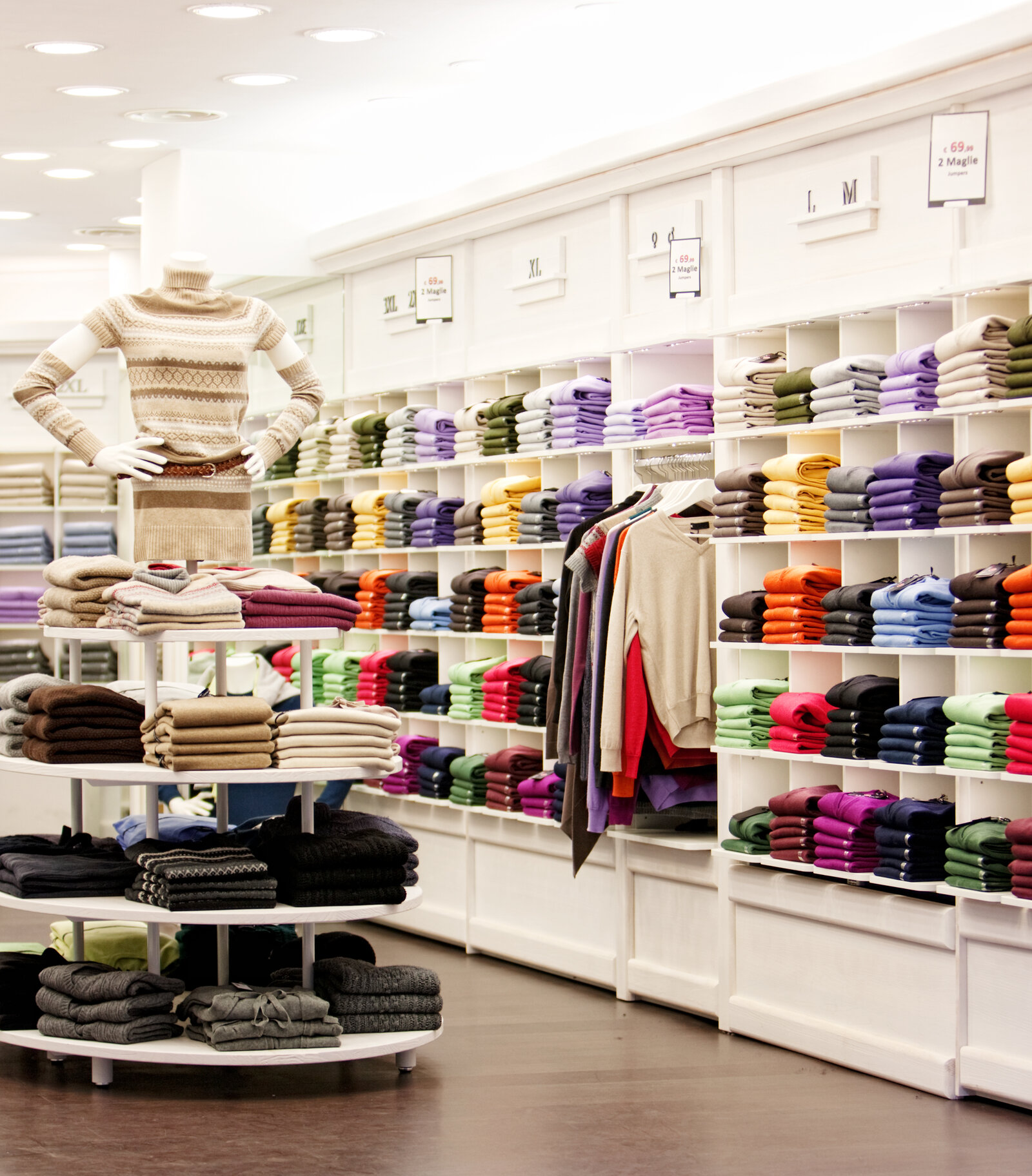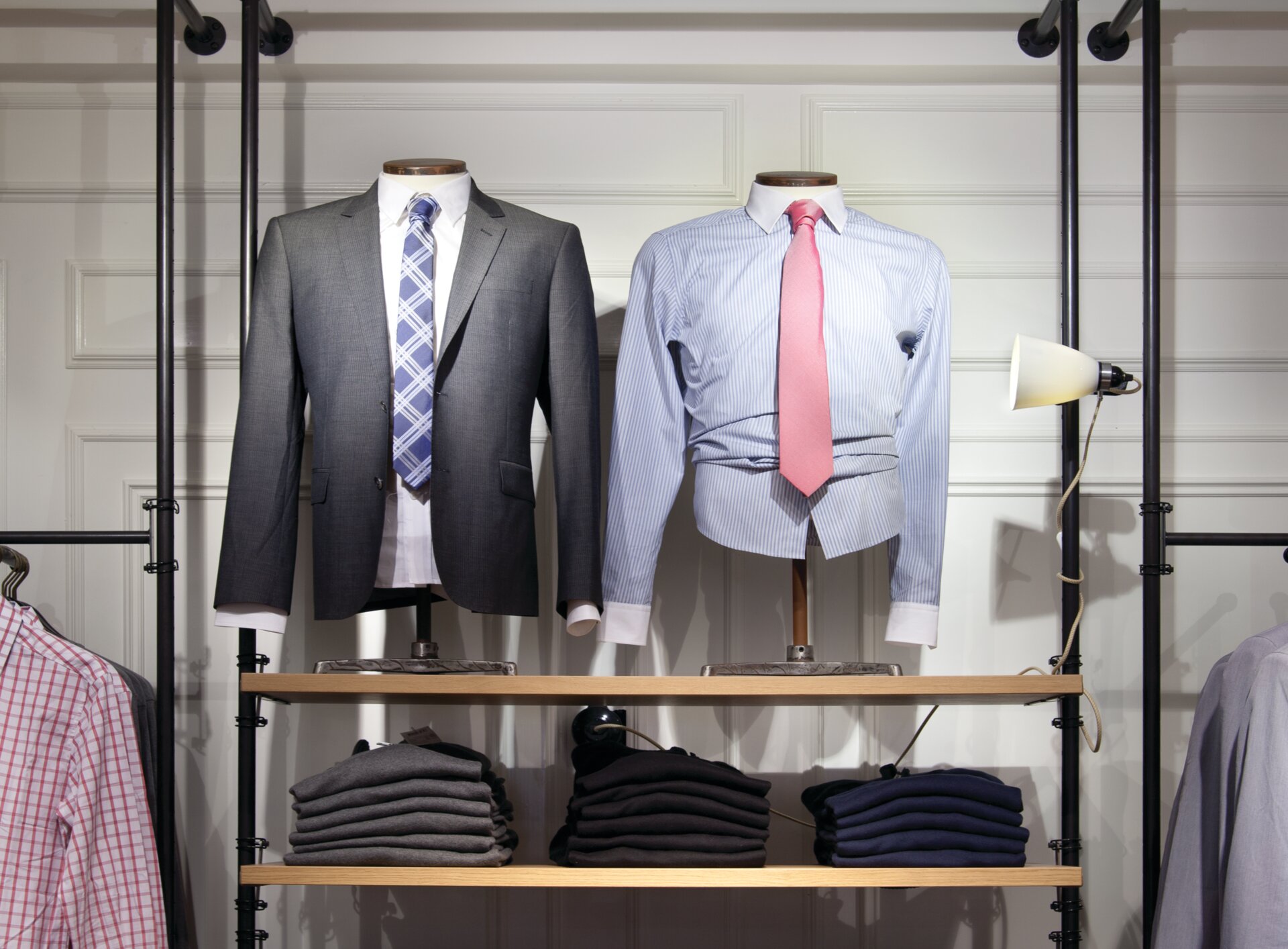
From the catwalk in Paris to designer stores in Milan, there is one must-have that every fashionista wants – the right lighting. It can accentuate colors, guide the customer’s eye to the latest collections and more. In the fashion world, light is the ultimate accessory.
When it comes to fashion, next season’s colors are a hot topic. So once they finally arrive on the shop floor, it goes without saying that they should look their best. The secret? Top quality lighting. By installing lamps with a color rendering index (CRI) value of 90 or above, customers will be able to view clothing as close to their “true” color as possible. LEDs are a great option for this, as are high-pressure discharge lamps, which provide a high degree of color fidelity and clear illumination. In terms of color rendering, it is crucial not to overlook changing room lighting, as this often is where customers decide whether to purchase or not to purchase. Warmer (flattering) tones also help here.
Speaking of warmer tones, color temperature is also an important aspect to consider. The temperature required will vary according to the type of clothing in question (as well as the desired atmosphere). Leather or warm-colored goods, for example, benefit from warm lighting – 2700-3000 K – whilst suits and black clothing require a much cooler temperature (higher Kelvin value). Accessories and jewelry also look best with a temperature of 4500 K or higher.

In addition to showing off the color of the entire collection, lighting can also be used to highlight particular pieces or parts of the store. Accent lighting illuminates selected items more brightly than the surrounding area. Using directional accent lighting, such as spot lights, allows light to be targeted where required, from mannequins to display tables. Flexible set-ups are essential here, as they enable the direction and angle of accent lighting to be adjusted should displays or shop layout change. Whilst track-mounted luminaires allow lighting to be quickly relocated, LED luminaires with different beam angles or the option to be swiveled through 360 degrees mean light can be easily redirected.

The real fun begins when it comes to decorative lighting: think classic chandelier or a funky modern centerpiece. Such fixtures should fit the overall design or present an intentional stark contrast. Finally, comes task lighting. Essentially this is brighter lighting required in parts of a store where work is carried out, such as the cash register. On one side of the counter the light should create a feel-good atmosphere and reinforce the customer’s decision to buy. On the other side, the light must be glare-free and allow shop assistants to focus on their work without becoming fatigued.
LEDs have a number of benefits when it comes to fashion store lighting – and they are becoming an increasingly popular choice. Their excellent quality of light, above-average energy efficiency, very long life and innovative design make them a state-of-the-art solution. Furthermore, LEDs are much smaller than conventional lamps and emit no heat, meaning it is possible to apply them to areas close to clothing, such as shelving. Ultimately, they provide flexibility – in terms of color, temperature and function – and enable the right atmosphere to be created.
Before fashion trends even reach the high street, or clothes arrive in stores, light plays an essential role. Showcased on catwalks around the world, entertainment lighting often ensures a successful debut. As the clothing hits the runway, light is used to build anticipation and excitement, and create moods and emotions. So while fashions change, it seems LEDs are going to stay en vogue for much longer.